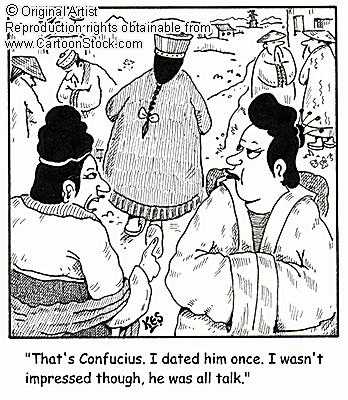
Inspired by Andrew Dlugan’s recent post “Stop Rehearsing! 3 Critical Things to Do Before Your Speech“, I will like to add to his list 7 more things you can do before your speech to take the nervousness out of you.
First, let’s do a quick recap of his three excellent pointers.
1. Study the venue logistics
2. Meet your audience (extra tip: build before rapport)
3. Watch, listen and participate in the event agenda
The rationale for #1 and #2 is straightforward – to reduce uncertainty, which is usually the main cause of a speaker’s nervousness. #3 is an extremely powerful strategy that is used by all professional speakers. And I strongly recommend you to do the same if you want to create impact in your presentation. Check out how Darren La Croix, 2001 World Champion of Public Speaking does it!
OK here’s my other 7.
4. Practice aloud your 30 seconds introduction
The first 30 seconds of any presentation is the most crucial because the audience is the most skeptical, and you the speaker is the most nervous. By making sure you have memorized your introduction, you will be less likely to fumble at the start. It helps to practice aloud too so that you know how you sound like. I will usually incorporate hand gestures too. By getting your entire body involved, your mind will be conditioned to think that you are doing the actual speech. And when you are on stage, you will feel like you have done in umpteen times. This has great effect in boosting your confidence.
5. Listening to music of your choice
Music is therapeutic and has a soothing effect on even the most nervous speaker. Here’s something you can try: create a personal playlist of music that works for you. It could be music that calms your nerves or music that perks you up. For some people, it is jazz. For some, it is loud heavy metal. Well to each its own. For me, instrumental music (especially piano recitals) works best (a.k.a Kevin Kern or SENS). What I usually do is to start listening to the music as I travel down to the speaking venue. And once I am there, I will usually start setting up and if possible, I will even play the playlist using their sound system. If they don’t allow them, you still have your ipod.
6. Do something that gets you in the mood
OK I know.. this sounds vague. Let me give you an example. I always get nervous before a contest. And sometimes it can get really bad. But what calms me down is watching some of my idols do their thing on stage. That includes comedians like Dane Cook and Russell Peters. Their cool demeanor never fails to make me feel relaxed. And I like how they make their audience laugh at cue. And after watching 3 – 5 mins of their gig, I will feel all motivated to also do the same. I suspect the laughing also helps a lot. So yes, watch something light-hearted.
There was once when I delivered a speech on human connection and in order to help me get into the mood, I watched a youtube video titled free hugs, which was what inspired me to deliver the speech in the first place.
So as you can tell, the form doesn’t matter, as long as you do something to get you into the mood.
7. Clear out the trash
This is a phrase I borrowed from this underground cult movie “The Peaceful Warrior”. Trash in this case is the clutter and voices in your head. Usually the black dogs. Here are some familiar ones:
You will never be good enough.
You don’t deserve to win.
They are going to walk out on me… just like the last time.
Aww.. you are trying to do your thing again. Don’t you remember how you failed the last time?
Why did I even agree to do this presentation… I am going to screw it up.
You are going to get too nervous and muck it all up!
I don’t have anything worthwhile to say, I am wasting their valuable time.
I am going to forget something important and look like a fool.
Most speakers empower these conversations by listening to them and believing in them. That’s why they look distracted and nervous on stage. The trick is to throw out these trash BEFORE your speech. Let me share with you one very effective way of doing so.
WRITE DOWN EVERY VOICE / CONVERSATION YOU HAVE IN YOUR HEAD.
Yes, it is that simple. All you need to do is just offload. Empty out all the voices in your head so that you can focus on delivering the presentation. What I like to do is to hand write it on a piece of A4 paper. Once I am done, I will crush the paper and dump it into the trashcan. The whole act itself is extremely liberating and really helps to keep you focused.
8. Do voice exercises
When you are nervous, your muscles tense up, including your throat. And if you don’t warm up, you will sound like a strangled frog on stage. Not a beautiful sight.
Voice exercises do not have to be complicated. Singing the scale works. Doing funny faces in private works too. Let me share with you a tried and tested procedure from a book titled “Preparing for Peak Performance”.
i. Massage your face. Loosen the jaw.
ii. Align your body, head, shoulders and spine; get grounded and breathe deeply
iii. Use sounds like “zzzzzzz”, “sssssss”, “haw” and “hoo”. Breathe deeply without lifting your shoulders
iv. Try some tongue twisters
v. Speak some key sentences from your presentation
If you have a microphone, I suggest you do a mike test too. So you know how you sound with a microphone. And of course to get used to holding and speaking from a mic.
9. Anchor yourself in a positive experience
Recall a positive experience where you did an excellent job on stage. Note your environment – what do you see, smell and hear? Be as specific as you can. The important thing is to re-experience the emotions – the excitement, relief, joy, happiness, pride etc. You can even pick a non-speaking experience like clinching a $100K business deal or a successful day out with your family. Any experience/memory that helps you re-experience the positive emotions.
As you are waiting to be called, close your eyes and relive your experience. Soak up all the emotions and then slowly open your eyes. Tell yourself that YOU CAN DO IT AGAIN. And then go do your thing!
10. Breathe deeply
If you recalled my first encounter with public speaking, you will remember how my best friend advised me to take 50 deep breaths to calm my nerves. And by the time I hit 20, I was hyperventilating. (grins)
Breathing deeply does help though… coz it helps your muscles relax. However you don’t have to do it 50 times. Sometimes doing it once is sufficient. The whole point is to help your body relax.
(Bonus) Ask yourself this question…
“Why am I delivering this speech in the first place?”
Remind yourself the value of your speech – how will your audience benefit from listening to you. Why is it so important for them to hear your message. In short, focus on your audience. That will also take the heat off you and allow you to put up a good show, because it is for a “higher purpose”.
Now go break a leg!
 Eric Feng is the go-to guy if you want to learn how to impress your investors and customers through public speaking. For more tips and tactics that you can use immediately in your next presentation, visit The Public Speaking Blog.
Eric Feng is the go-to guy if you want to learn how to impress your investors and customers through public speaking. For more tips and tactics that you can use immediately in your next presentation, visit The Public Speaking Blog.





